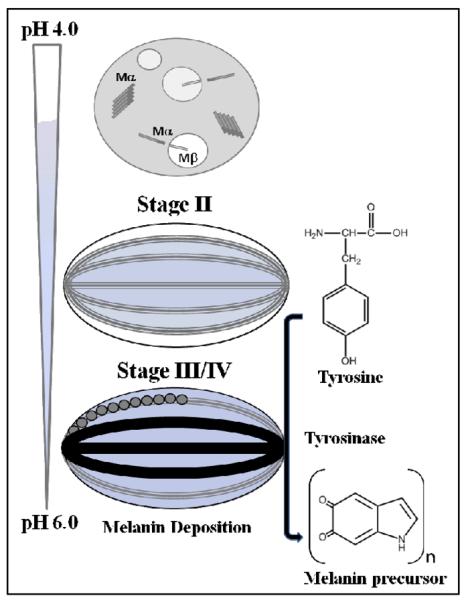Fig. 6.

Schematic representation showing the four morphological stages of melanosome maturation. Stage I contains full-length Pmel17, which undergoes membrane cleavage, liberating the Mα from the Mβ transmembrane fragment. Further proteolytic processing of Mα generates pre-fibrillar aggregates. Stage II consists of long fibrillar striations that run in parallel arrays spanning the length of the melanosome. At least two domains, including RPT are proposed to contribute to the fibrillar matrix. Stages III and IV contain melanins, synthesized from tyrosine by the enzyme, tyrosinase. The melanin precursors are depicted as circles and melanin as black polymer deposits on the fibrils. Maturation of the melanosome is accompanied with a pH change, with a gradient ranging from 4.0–6.0.
